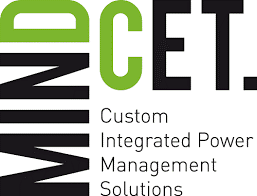PAGE CONTENTS
Objectives
The objective is to reduce drastically both the recurrent price and the mass of the platform equipment thanks to:
- Integration and standardization – multiplatform approach
- Low cost components by upscreening of industrial / automotive parts combined with radhard dies encapsulated in plastic packages
- Innovative technologies : high power and high power density domains.
In order to address this business objective, the project is built on several work-packages grouped in 3 major themes :
- “Architecture”: requirements, specifications and architecture related to the following domains : Power (EPS & PCDU) , Propulsion (PPU), Avionic, Components and interfaces towards gyro and OBC functions.
- “ Preliminary Design” : preliminary development at module level ( Low and high power PCDU, low and high power PPU , …) and at equipment level (ACE, PACE , HPU).
- “Product Supply Chain and Screening Consolidation “ : focus on the supply chain and screening activities mandatory to reach targeted costs.
The main hardware deliverables of the activity consist in
- A Breadboard of a ACE Housing,
- a TMTC bridge emulator,
- a set of PPU BB , allowing a Coupled test with a RIT2X engine,
- and a a set of PCDU BB.
Prototypes of DPC G1 and High Speed Driver in plastic BGA packages are also deliverable items.
Challenges
The main challenge for the programme is achieving the drastic cost reduction targets. What is usually requested for a new generation of equipment is a 30% reduction. The main technical challenges are the introduction of COTS and the introduction of new generation of power components such as GaN transistors. The increased proximity between power and low-level functions is also a challenge, as well as the thermal aspects.
System Architecture
Refer to Product features.
Plan
The global Project plan is as follows:
- ARTES C&G project (risk reduction phase concerning the use of GaN, COTS components, etc): subject of the present web page
- Further development project(s) to qualify the units preliminary designed in the frame of the ARTES C&G
Current Status
The Architecture review has been held, providing a product tree and confirming the feasibility (mass, dimensions, electrical & mechanical performances, dissipations) of the modules, as well as firmware sizes and performances.
The target engines for Propulsion electronic has been extended to GIE.
An intensive breadboard test campaign has taken place, dealing with Power Conditioning, TM/TC and Propulsion.
In particular, the electronics necessary for the preparation of a coupling test with a RIT2X engine was successfully tested; the coupled test took place and provided very useful information.
Lots of new technologies have been evaluated in the frame of the project, as well as new components.
The project is completed, but it has paved the way to the design and development, followed by the Qualification of two units (ACE and HPU).


